Number of Pieces: The number of pieces in a cookware set can vary widely. Consider your cooking habits and kitchen space when selecting the right size for you. An 18-piece set would typically include a variety of pots, pans, and lids.
Non-Stick Coating: If the set includes non-stick pans, check the type and quality of the non-stick coating. High-quality non-stick coatings are durable and make cooking and cleaning easier.
Heat Distribution: Good cookware should distribute heat evenly to prevent hot spots. Stainless steel and cast iron are known for their even heat distribution.
Handles: Comfortable and heat-resistant handles are important for safety and ease of use.
Lids: Ensure that the set includes matching lids for the pots and pans. Lids help to trap heat and moisture, which can be essential for certain cooking methods.
Compatibility: Check if the cookware is compatible with your cooktop. Some sets may not be suitable for induction stovetops, for example.
Maintenance: Consider how easy the cookware is to clean and maintain. Some sets are dishwasher-safe, while others require hand washing.
Price: Cookware sets come in various price ranges. Set a budget and look for options that offer the best value for your money.
Brand and Reviews: Research the brand and read reviews from other users to gauge the overall quality and performance of the cookware set you’re interested in.
Durability: Look for cookware that is built to last. High-quality materials and construction are key to longevity. Stainless steel and cast iron, for example, are known for their durability.
Cooking Surface: Some sets come with different types of cooking surfaces. For instance, you might find a combination of non-stick pans and stainless steel pots. This can be convenient if you have different cooking needs.
Cooking Methods: Consider the types of cooking methods you use most often. If you like to sear or brown food at high temperatures, you’ll want cookware that can handle that, such as stainless steel or cast iron.
Weight: Keep in mind the weight of the cookware. Cast iron is heavy, while aluminum is lightweight. Choose what you’re comfortable handling.
Oven-Safe: If you like to finish dishes in the oven, make sure the cookware is oven-safe at the temperatures you need.
Warranty: Check if the manufacturer offers any warranties or guarantees. This can give you peace of mind in case of defects or issues.
Accessories: Some cookware sets come with additional accessories like utensils, steamer inserts, or storage solutions. Consider whether these extras are valuable to you.
Cooking Goals: Think about your cooking goals and aspirations. If you’re an experienced chef or plan to do more gourmet cooking, you may want higher-end cookware. For occasional home cooks, a more basic set may suffice.
Space: Consider the storage space you have available in your kitchen. Some cookware sets come with stackable or nestable pieces to save space.
Care Instructions: Read and follow the care instructions provided by the manufacturer to ensure the longevity of your cookware. Different materials may require different care.
User Reviews: Check online reviews and ratings from other customers who have purchased the same cookware set. They can provide valuable insights into real-world performance and durability.
Price vs. Quality: While it’s essential to stay within your budget, remember that quality cookware is an investment that can last for many years. Spending a bit more for better quality may save you money in the long run.
Maintenance: Consider how easy it is to maintain the cookware. Some materials, like stainless steel, are relatively low maintenance, while cast iron requires special care to prevent rust.
Cooking Goals: Think about your cooking goals and the types of dishes you enjoy preparing. Different cookware materials excel in specific cooking techniques, so choose accordingly.
Ultimately, the choice of a cookware set depends on your individual cooking preferences, budget, and kitchen setup. Carefully evaluate your needs and priorities before making a decision, and don’t hesitate to seek advice from friends, family, or experts in the field if you’re unsure about which cookware set is best for you.
Material Safety: Be aware of any health concerns associated with certain cookware materials. For example, non-stick coatings can release potentially harmful fumes when overheated. Stainless steel and cast iron are generally considered safe options.
Size Variety: Ensure that the cookware set includes a variety of sizes to accommodate different recipes and serving sizes. Having both small and large pots and pans can be very useful.
Lid Handles: Check if the lids come with heat-resistant handles for safe and easy handling. Clear glass lids can also be a convenient feature, allowing you to monitor cooking without lifting the lid.
Cool-Touch Handles: Some cookware sets have handles that stay cool to the touch even when the cookware is hot. This adds an extra level of safety.
Pouring Spouts: Look for pots and pans with built-in pouring spouts to make draining liquids or pouring sauces more convenient.
Dishwasher Compatibility: If you prefer to use a dishwasher for cleanup, make sure the cookware is labeled as dishwasher-safe.
Multi-Layered Construction: Some high-end cookware features multi-layered or clad construction, which combines different metals for excellent heat distribution and retention. This can enhance cooking performance but may come at a higher price.
Wok or Specialty Pans: Depending on your cooking interests, consider whether you need specialty pans like a wok or a griddle. These can expand your culinary options.
Handles Detachability: Some cookware handles are designed to be removable for easier storage. This can be a space-saving feature if storage is a concern.
Induction Compatibility: If you have an induction cooktop, ensure that the cookware is compatible with induction cooking.
Brand Reputation: Reputable brands often have a history of producing high-quality cookware. Research the brand’s reputation and customer reviews.
Local Regulations: Be aware of any local regulations or safety standards related to cookware materials. Some countries have specific guidelines for food-contact materials.
Try Before You Buy: If possible, visit a store to handle the cookware and get a feel for its weight, balance, and handle comfort before making a purchase.
Budget Flexibility: Consider being flexible with your budget if you find a cookware set that meets most of your needs. Investing in quality cookware can pay off in the long run.
Warranty and Customer Support: Check the warranty terms and customer support options provided by the manufacturer. A good warranty can offer peace of mind.
Package Contents: Review the specific pieces included in the cookware set to ensure it covers your cooking needs. Look for essential pieces like saucepans, frying pans, and stockpots.



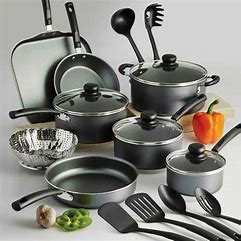
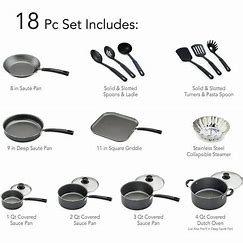
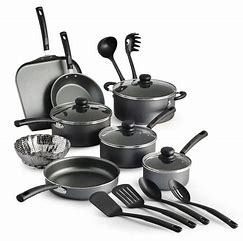
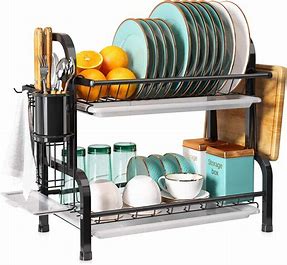
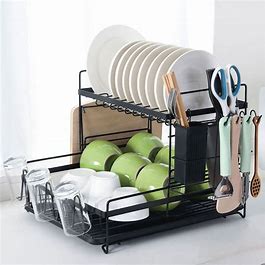
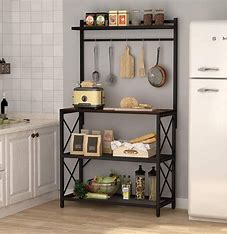
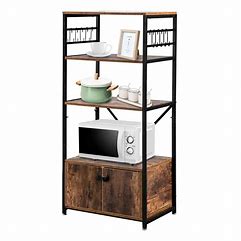
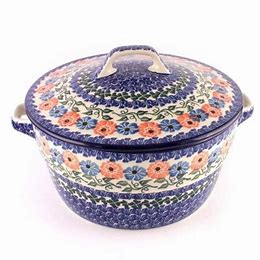
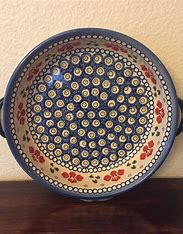
Reviews
There are no reviews yet.